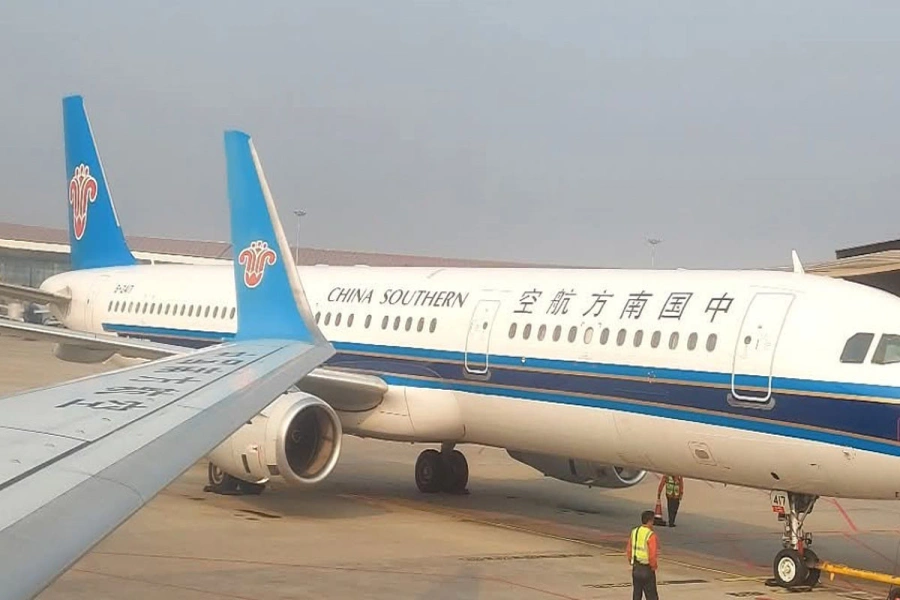A boom in consumer drone sales has spawned a counter-industry of start-ups aiming to stop drones flying where they shouldn’t, by disabling them or knocking them out of the sky.
Dozens of start-up firms are developing techniques - from deploying birds of prey to firing gas through a bazooka - to take on unmanned aerial vehicles (UAVs) that are being used to smuggle drugs, drop bombs, spy on enemy lines or buzz public spaces.
The arms race is fed in part by the slow pace of government regulation for drones.
In Australia, for example, different agencies regulate drones and counter-drone technologies. “There are potential privacy issues in operating remotely piloted aircraft, but the Civil Aviation Safety Authority’s role is restricted to safety. Privacy is not in our remit,” the CASA told Reuters.
The consumer drone market is expected to be worth $5 billion by 2021, according to market researcher Tractica, with the average drone in the United States costing more than $500 and packing a range of features from high-definition cameras to built-in GPS, predicts NPD Group, a consultancy. Australian authorities relaxed drone regulations in September, allowing anyone to fly drones weighing up to 2kg without training, insurance, registration or certification.
Elsewhere, millions of consumers can fly high-end devices - and so can drug traffickers, criminal gangs and insurgents.
Drones have been used to smuggle mobile phones, drugs and weapons into prisons, in one case triggering a riot. One US prison governor has converted a bookshelf into an impromptu display of drones his officers have confiscated.
Armed groups in Iraq, Ukraine, Syria and Turkey are increasingly using off-the-shelf drones for reconnaissance or as improvised explosive devices, says Nic Jenzen-Jones, director of Armament Research Services, a consultancy on weapons.
A booby-trapped drone launched by Islamic State militants killed two Kurdish Peshmerga fighters and wounded two French soldiers in October near Mosul.
The use of drones by such groups is likely to spread, says Jenzen-Jones. “There’s an understanding that the threat can migrate beyond existing conflict zones,” he told Reuters.
Rallies erupt on ‘dog meat day’ in South Korea

Anti-drones
This is feeding demand for increasingly advanced technology to bring down or disable unwanted drones.
At one end of the scale, the Dutch national police recently bought several birds of prey from a start-up called Guard From Above to pluck unwanted drones from the sky, its CEO and founder Sjoerd Hoogendoorn said in an email.
Other approaches focus on netting drones, either via bigger drones or by guns firing a net and a parachute via compressed gas.
Some, like Germany’s DeDrone, take a less intrusive approach by using a combination of sensors - camera, acoustic, Wi-Fi signal detectors and radio frequency (RF) scanners - to passively monitor drones within designated areas.
Newer start-ups, however, are focusing on cracking the radio wireless protocols used to control a drone’s direction and payload to then take it over and block its video transmission.
Singapore’s TeleRadio Engineering uses RF signals in its SkyDroner device to track and control drones and a video feed to confirm targets visually.
DroneVision Inc of Taiwan, meanwhile, says it is the first to anticipate the frequency hopping many drones use. Founder Kason Shih says his anti-drone gun - resembling a rifle with two oversized barrels, coupled with a backpack - blocks the drone’s GPS signals and video transmission, forcing it back to where it took off via the drone’s own failsafe features.
Varied clientele
Clients, the start-up companies say, range from intelligence agencies to hotels. DroneVision, for example, helped local police down 40 drones flying around Taipei 101, one of the world’s tallest buildings and a magnet for drone users, in a single day.
In the Middle East, upscale hotels are talking to at least two companies about blocking drones from taking shots of their celebrity guests longing poolside or in the privacy of their bathrooms.
And even while the military, Jenzen-Jones says, may have the capability to bring down drones, demand is shifting to nimbler, more agile devices to cope with attacks using smaller off-the-shelf devices. “The key is looking for systems that are scalable, lightweight and easily deployable,” he said.
DroneShield, an Australian-listed company, says it has sold its drone detection equipment to an Asian national security agency it declined to identify, and the Turkish prime minister’s office.
The problem, such companies say, is that regulations on the use of drones - and about countering them - are still in their infancy. In countries like the United States and Australia, for example, drones are considered private property, and they can only be jammed by government agencies.






































